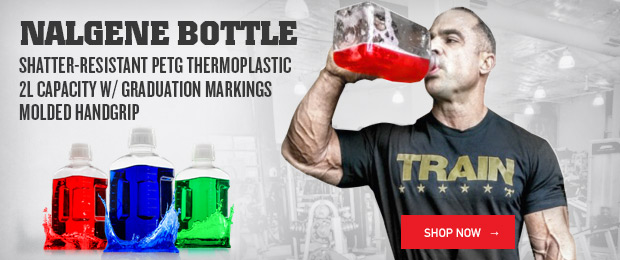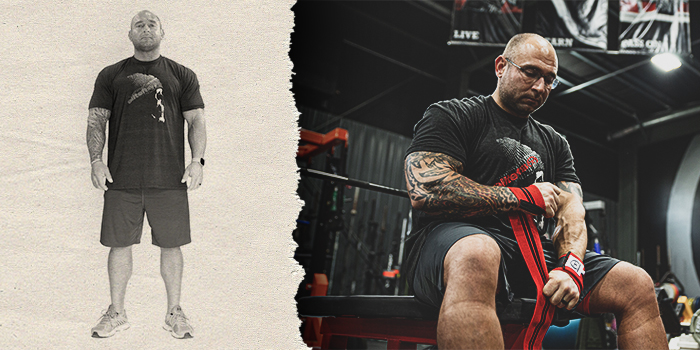
As athletes, we all know nutrition is important for us to perform at our best. Whether you are a bodybuilder, a strength athlete, or a recreational gym-goer, you will quickly find out that without proper nutrition, nothing seems to happen. I’ve heard it time and time again about how an athlete didn’t really see changes in their physique or performance until they took their nutrition seriously.
There are so many diets out there nowadays it can be very overwhelming to figure out what works best for you. A quick way to filter things out is to learn the nuances of how to lay out a diet and then figure out what foods work best for you. I’ve already outlined the basics in my last article, but now it’s time to dig deeper and plan things out, but not just for your day or week.
RECENT: Simplify Your Nutrition
In order to truly become a great athlete, you have to start looking at things year by year. We’ve all seen some crazy transformations and the most common thing said is that they were consistent day in and day out and had a plan for each phase of their plan.
That is where we are now. We need to develop a plan for each phase of the game. The way I like to lay things out is to think of where an athlete wants to end up and then reverse-engineer it to the present date.
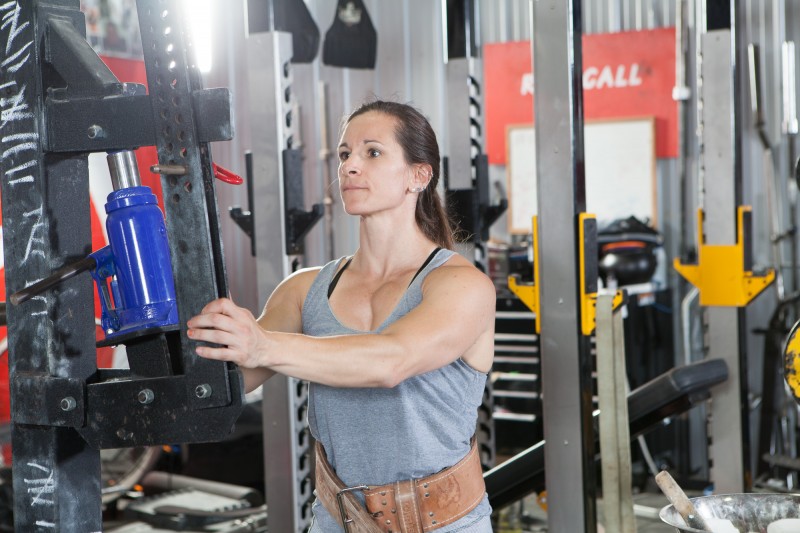
Post-Show Phase
The first and probably the most important phase is the post-show phase. A lot of athletes get tripped up about what to do after a meet or post-show. The athlete held themselves to a higher standard leading up to their contest and deprived themselves of foods and became super strict.
Once that sense of accomplishment has passed and the contest is over, they tend to go a little crazy. In the bodybuilding world, it is not uncommon to have competitors rebound up 30 to 40 pounds in just a few weeks. You also see athletes fall into post-show blues, and their motivation to perform and be regimented is thrown out the window.
Planning these phases ahead of time allows each athlete to focus on the next task in mini goal-setting ways. For the average strength athlete, they’ve only focused on becoming as big and strong as possible. So now would be a great time to do a cut and get some of their body fat down. Why is this important for a strength athlete, you might ask?
The benefits of decreasing body fat are endless from a health perspective but let’s look at it from a performance perspective. The biggest thing is that it will allow you to become sensitive to carbohydrates again. At a certain point of gaining weight, your body will start to add more fat than muscle and will become insulin-resistant. We want our bodies to be as insulin-sensitive as possible so that they utilize all of the carbs we give them in order to heal and help in the rebuilding process of muscle.
By dieting down to a leaner physique, this will ensure that your sensitivity is at an all-time high, and once you go back into your growth phase, you will be putting on more muscle than fat. Increasing carb sensitivity will allow us to increase our peri-workout nutrition with carbohydrates, which can help blunt the cortisol effect of training and ultimately help you recover better.
If you look at the top powerlifters, most, if not all, of them are lean. Being leaner will make sure that you maximize your weight class. Having the most amount of muscle possible in a weight class will do great things because over time a bigger muscle has a great propensity to becoming a stronger muscle.
Why is this cut important to do after a meet? Typically, it’s recommended that most athletes go into a hypertrophy phase post-meet, as this will allow the athlete to get healthier and work on any imbalances or weaknesses that have occurred during prep. It will also allow them to increase muscle size, which has been shown to increase strength over time.
LISTEN: Table Talk Podcast Clip — Trying to Bulk to 400 Pounds?
The idea behind pairing dieting down and a hypertrophy cycle is easy when dieting. You want to try to preserve as much muscle as possible while being on a caloric deficit, and the best way to do that is to be in a hypertrophy phase. Not only does this phase help correct any issues, but the novel stimulus of reintroducing higher reps will force greater adaptation in the body which will allow you to preserve muscle. Plus, we know that volume is a key driver to muscle hypertrophy. This doesn’t mean fluff workouts. You will still train hard and in diverse rep ranges. You typically don’t trend below six reps during this phase. This phase should last 10 to 12 weeks.
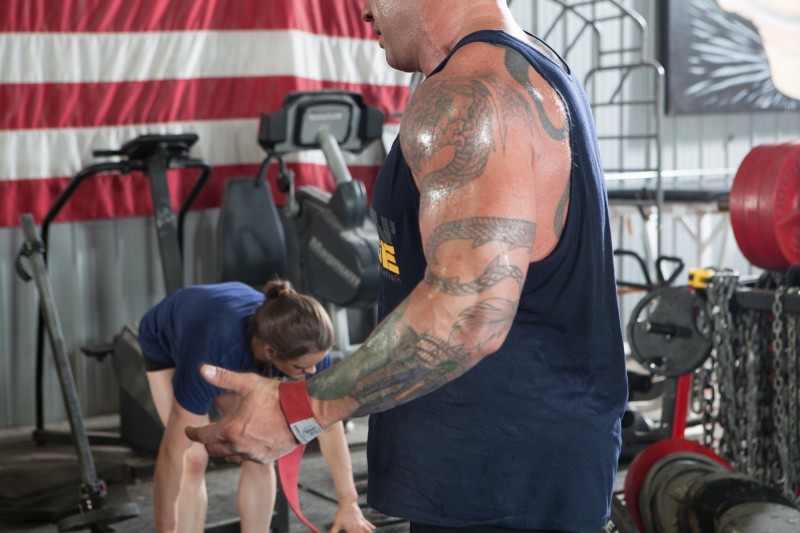
Reverse Dieting Phase
After that phase of training, you should be ready to start reverse dieting out and slowly adding calories back into your plan. This phase is key to adding on a lot of muscle without extra fat. The issue is that it is hard to stay on track during this phase.
What I see from most strength athletes is they either don’t have the discipline to keep pushing or they say they are weak now and justify it by eating shit to gain all the weight back. Becoming weak during a 10- to 12-week diet when done properly should be minimal or non-existent, but a weak-minded person can easily sabotage themselves and have the mentality of “I am dieting; therefore, I am now going to get weak.”
I have worked with several hundreds of athletes, and the ones who put their heads down and work hard never drop strength. It’s something to think about, as discipline and mentality are beyond the scope of this article.
During this phase of coming out of a diet, I would recommend an initial increase of 250 calories for women and 500 calories for men, with most of those calories coming in the form of carbohydrates around their training window. From there, you’ll monitor weight and add after a week or so of staling out. I don’t shoot for a goal weight each month; I just aim to make sure the scale never stays stagnant for longer than two weeks.
With the addition of the food, it is a good idea to turn your program into a strength-hypertrophy program. Think Dorian Yates- or DC-style training where the first two to three compound moves are heavy, but the five to eight rep range and all of your assistance work are in the higher hypertrophy rep range of 10 to 30 reps.
It is important during this phase as in all phases to keep a log book and work on progressive overload (article coming soon) to ensure that growth is occurring and strength is always on the rise with the exercises you have selected. This phase can last anywhere from two to four months. You could also jump into a fun/practice meet during this phase but I would not recommend peaking for it.
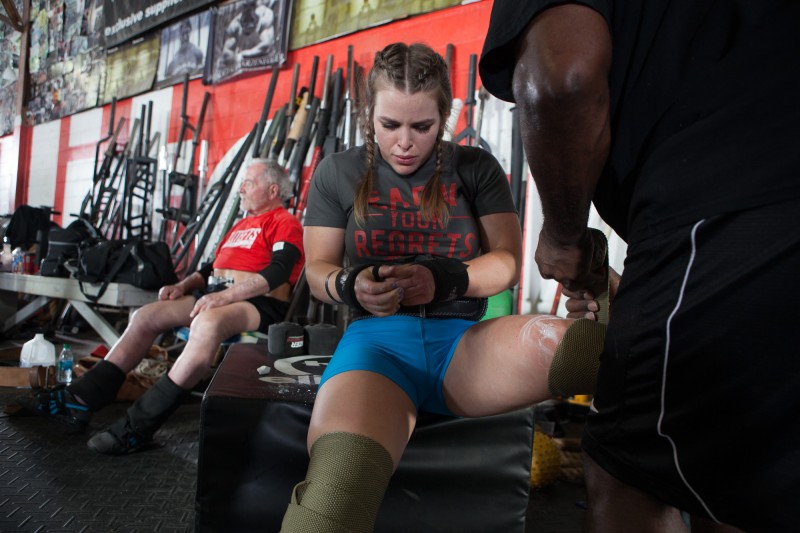
Meet Prep Phase
This last phase is your meet prep phase. During this phase, as long as weight class is not an issue, I would keep pushing weight until you are eight to ten weeks out. Once you hit that mark, I would maintain all the way into the meet, even when you hit your goal limit.
READ MORE: Gain Weight in Your Off-Season with This Meal Plan
Keep in mind that getting ready for a meet is very taxing and intensive, but the volume demand is low, so the excess need for a ton of calories is not warranted. Your maintenance level will be more than efficient enough to help you recover.
Remember that our biggest driver of fatigue is volume accumulation. Once we start to drop that, recovery shouldn’t be an issue from a calorie perspective. I cannot emphasize enough the importance of learning how to come down into a parasympathetic state, especially during this phase. Your CNS will be taking a big hit once the heavy weights start getting loaded. Think about things like recovery modalities, meditation, sleep performance, nasal breathing, etc.
If you boost calories a ton and your volume goes down, this will lend itself to making you fatter and softer going into a meet and could potentially mess with your leverages, which you don’t want. That’s why I recommend maintenance weight around eight to ten weeks out so you can get really strong with the body you will compete with.
I know this sounds like a lot to consider, and if you compete three to four times a year, it may seem impossible, but you have to ask yourself, “Is competing so often impeding my abilities to improve and become a well-rounded lifter?”
If the answer is yes, take a break and get on a long-term plan for success. If you just love to compete or need more practice at competing, just train through meets with real peaks involved and focus on one big meet a year. This will allow you to still push the plan and get some comps in.
All in all, this is about getting you to start thinking outside the frame of the next 12 weeks and get you focused on long-term success and growth.










